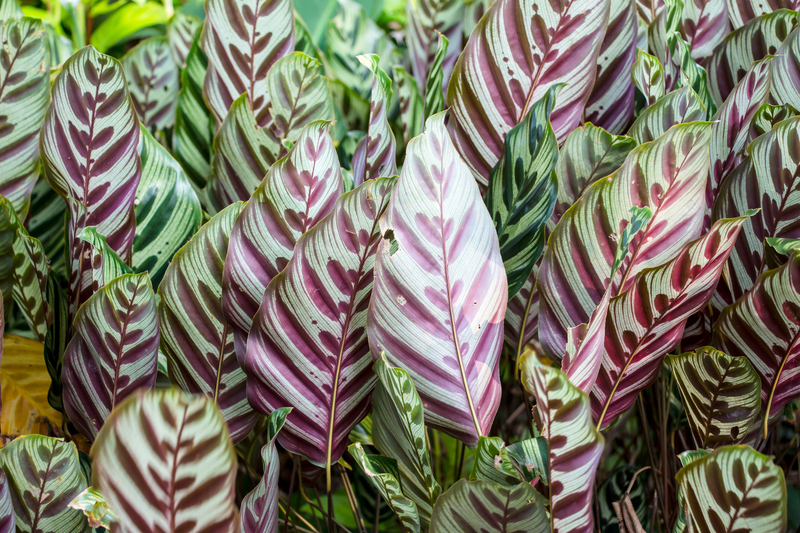Unlocking a Lush Lawn: Beginner Secrets for Stunning Grass Care
Are you dreaming of a gorgeous, green lawn that turns heads in your neighborhood? Achieving a lush, healthy lawn may seem daunting, especially for beginners, but with the right tips and dedication, it's within your reach. In this guide, we'll uncover the secrets to stunning grass care, covering essential steps, effective strategies, and common mistakes to avoid. Whether you're starting from scratch or revitalizing a tired yard, discover how to unlock the potential of your lawn and create an outdoor space you'll love.

Table of Contents
- Why Lawn Care Matters
- Understanding Your Grass Type: Foundation for Success
- Seasonal Lawn Care Secrets
- Watering Wisely for Healthy Grass
- Mowing Masterclass: Height, Frequency, and Technique
- Fertilize for a Lush Lawn
- Combat Common Lawn Problems
- Eco-Friendly Grass Care Tips
- Frequently Asked Questions
- Expert Tips for Lasting Results
Why Lawn Care Matters
A well-maintained lawn is more than just beautiful. It increases your property value, provides a safe play area for children and pets, helps prevent erosion, and even improves air quality. Investing time in grass care pays off with healthier, more resilient turf, fewer weeds, and less need for costly repairs.
- Boosts Curb Appeal: A lush yard makes your home more welcoming.
- Promotes Outdoor Enjoyment: Enjoy gatherings, games, and relaxation on soft, green grass.
- Improves Environmental Health: Lawns help filter rainwater and cool the surrounding area.
Understanding Your Grass Type: Foundation for Success
Before crafting your lawn care routine, it's crucial to identify your grass species. Do you have cool-season grasses like Kentucky bluegrass and fescue, or warm-season varieties such as Bermuda and zoysia? Knowing this impacts watering, mowing, and feeding practices, ensuring you get the lush grass you desire.
How to Identify Your Grass
- Look at blade texture (fine, medium, coarse).
- Observe growth patterns and color changes through seasons.
- Consult local extension offices or gardening centers for guidance.
Matching Care to Grass Type
- Cool-Season Grasses: Thrive in spring and fall; require more frequent watering in summer heat.
- Warm-Season Grasses: Peak in late spring and summer; prefer different mowing and feeding schedules.
Seasonal Lawn Care Secrets
Unlocking a healthy, vibrant lawn means adapting your regimen throughout the year. Here's how to tailor your stunning grass care approach by season.
Spring: The Growth Kick-Start
- Dethatch and Aerate: Remove debris and loosen compacted soil to encourage root growth.
- Overseed Bare Spots: Reinforce thinning patches for a uniform look.
- Apply Spring Fertilizer: Boost energy for new shoots (see our fertilizing guide below).
Summer: Keep It Thriving
- Deep, Infrequent Watering: Encourages deep roots and drought tolerance.
- Mow Higher: Shading roots protects against heat stress.
- Monitor for Pests: Early detection minimizes damage.
Fall: Prep for the Cold
- Rake Leaves Regularly: Prevents suffocation and fungal diseases.
- Feed for Winter: Apply a high-potassium, slow-release fertilizer.
- Aerate: Relieve compaction before the ground freezes.
Winter: Protect and Plan
- Minimize Traffic: Frozen grass blades are brittle and easily damaged.
- Plan Next Year's Improvements: Review what worked and make notes for spring.
Watering Wisely for Healthy Grass
Proper irrigation is a cornerstone of stunning grass care. Over- or underwatering can lead to disease, shallow roots, and weak turf.
How Much Should You Water?
- General Rule: Aim for 1 to 1.5 inches of water per week, including rainfall.
- Morning Watering: Reduces evaporation and mildew risk.
- Adjust to Soil Type: Sandy soils drain faster; clay holds moisture longer. Check soil moisture 1-2 inches below the surface before watering again.
Watering Methods
- Sprinkler Systems: Offer uniform coverage but require occasional adjustment.
- Soaker Hoses: Conserve water and direct it at the root zone.
- Manual Watering: For small lawns, spot-treat dry spots as needed.
Mowing Masterclass: Height, Frequency, and Technique
Mowing might seem simple, but it's an art that impacts your lawn's health and lushness.
Secrets to Better Lawn Mowing
- Mower Blade Sharpness: Dull blades tear rather than cut, causing brown tips and vulnerability to disease.
- Mow at the Right Height: Most grass varieties thrive when left 2.5 - 4 inches high. Taller blades mean deeper roots and less weed competition.
- Follow the "One-Third Rule": Never remove more than 1/3 of the grass blade in a single mow.
- Change Patterns: Vary mowing direction each week to prevent soil compaction and ruts.
When to Mow
- Weekly during peak growth seasons.
- Less frequently during drought or heatwaves.
Fertilize for a Lush Lawn
Fertilization replaces nutrients grass needs from depleted soil. A targeted fertilizer plan gives your grass a lush, green boost.
Finding the Right Fertilizer
- Nitrogen (N): Encourages lush, green growth.
- Phosphorus (P): Promotes healthy roots and seedling establishment.
- Potassium (K): Helps with overall vigor and disease resistance.
Look for a balanced, slow-release fertilizer and always read the instructions. Too much fertilizer can burn grass or leach into waterways.
How Often to Feed Your Lawn
- Cool-Season Lawns: Spring and fall feedings; avoid summer applications unless absolutely needed.
- Warm-Season Lawns: Feed in late spring and midsummer for maximum results.
Always water deeply after fertilizing to activate nutrients and protect your grass.
Combat Common Lawn Problems
Even the best-kept yards face challenges. Recognizing and addressing them early helps maintain a lush, healthy lawn.
Weed Control
- Pre-emergent Herbicides: Stop weeds before they sprout, especially in early spring.
- Hand-pulling: Effective for small infestations--pull weeds when soil is moist.
- Dense Grass: Well-fed, closely-mown grass crowds out weeds naturally.
Pest and Disease Management
- Grubs and Insects: Yellow patches or spongy turf are warning signs; use appropriate insecticide or natural remedies like nematodes.
- Fungal Diseases: Brown patches, powdery mildew, or slimy areas often result from overwatering or poor air flow. Mow regularly and avoid evening watering.
Dealing with Bald Spots
- Topdressing: A thin layer of compost over bare areas stimulates regrowth.
- Overseeding: Replenishes tired lawns each fall or spring.
Eco-Friendly Grass Care Tips
You can cultivate a stunning, sustainable lawn by embracing environmentally friendly practices:
- Mulch Clippings: Leave grass clippings on the lawn to return nitrogen and reduce landfill waste.
- Organic Fertilizers: Consider compost, manure, or seaweed-based products to feed soil life.
- Native Grass Alternatives: Reduce mowing and irrigation by mixing in regionally adapted ground covers.
- Smart Irrigation: Install rain sensors and drip systems to avoid overwatering.
- Pest Control: Attract beneficial insects like ladybugs and lacewings with flowering borders.
Frequently Asked Questions About Stunning Grass Care
How can beginners get a thicker, greener lawn fast?
Overseed thin areas in early fall or spring, apply a slow-release fertilizer, and water consistently. Mow high to encourage stronger roots and reduce weed pressure.
How do I fix yellow or brown spots in my lawn?
Identify if the spots are caused by pet urine, drought, grubs, or disease. Water deeply, remove dead grass, overseed, and adjust irrigation habits. Address pests with targeted treatments.
What's the best schedule for beginner lawn care?
- Spring: Dethatch, aerate, overseed, and fertilize.
- Summer: Water, mow higher, patrol for pests.
- Fall: Rake, fertilize, overseed, and aerate if needed.
- Winter: Minimize traffic and plan improvements.
Expert Tips for Lasting Results
- Test Your Soil: Check pH (ideal: 6.0-7.0) for optimized nutrient uptake. Amend as needed with lime or sulfur.
- Aerate Annually: Especially for high-traffic lawns or clay soils, reducing compaction and enhancing root growth.
- Maintain Your Mower: Clean blades after each mow, and service engines yearly for safer, sharper cutting.
- Stay Consistent: Routine care yields exponential benefits. Set calendar reminders for each major task.
- Patience Pays Off: A thriving, lush green lawn is a journey, not a sprint. Track progress and celebrate small victories.

Unlock a Lush Lawn Starting Today
With these beginner secrets for stunning grass care, a vibrant, enviable lawn is within your grasp. From understanding your grass type and mastering mowing, to correcting problems and adopting eco-friendly techniques, consistent, informed care is the pathway to outdoor beauty. Start now--your lush, welcoming lawn awaits!